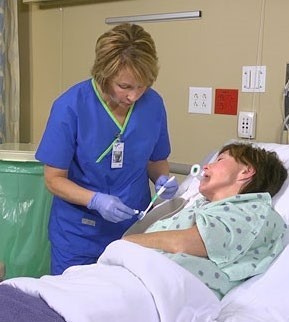A nurse is caring for a client who is placed on supplemental oxygen for hypoxia. The nurse should identify that which of the following findings indicate the intervention was effective?
Heart rate 110/min
Restlessness
Pink mucous membranes
Respiratory rate 28/min
The Correct Answer is C
Supplemental oxygen is administered to increase the amount of oxygen in the body and improve tissue oxygenation. The goal of this intervention is to improve the client's condition and reduce symptoms of hypoxia.
Options a, b, and d are all indicative of ongoing hypoxia and are not desirable outcomes. An increase in heart rate and respiratory rate and restlessness can be a sign that the client is still struggling to breathe and not getting enough oxygen.
Option c, pink mucous membranes, is indicative of improved tissue oxygenation. The mucous membranes, such as those in the mouth and nose, should be a healthy pink color when oxygen levels are adequate. Therefore, the nurse should identify pink mucous membranes as an indication that the intervention was effective in improving the client's hypoxia.
Nursing Test Bank
Naxlex Comprehensive Predictor Exams
Related Questions
Correct Answer is B
Explanation
Turning the client to the side can help prevent aspiration while performing oral care on an unconscious patient.

Correct Answer is B
Explanation
According to the CDC, practicing hand hygiene is a simple yet effective way to prevent infections in healthcare settings. Hand hygiene means cleaning your hands by washing with soap and water or using an alcohol-based hand sanitizer. When washing hands with soap and water, healthcare workers should wash their hands for at least 20 seconds1. Holding their hands below the elbows while rinsing off soap is a proper hand hygiene technique

Whether you are a student looking to ace your exams or a practicing nurse seeking to enhance your expertise , our nursing education contents will empower you with the confidence and competence to make a difference in the lives of patients and become a respected leader in the healthcare field.
Visit Naxlex, invest in your future and unlock endless possibilities with our unparalleled nursing education contents today
Report Wrong Answer on the Current Question
Do you disagree with the answer? If yes, what is your expected answer? Explain.
Kindly be descriptive with the issue you are facing.
